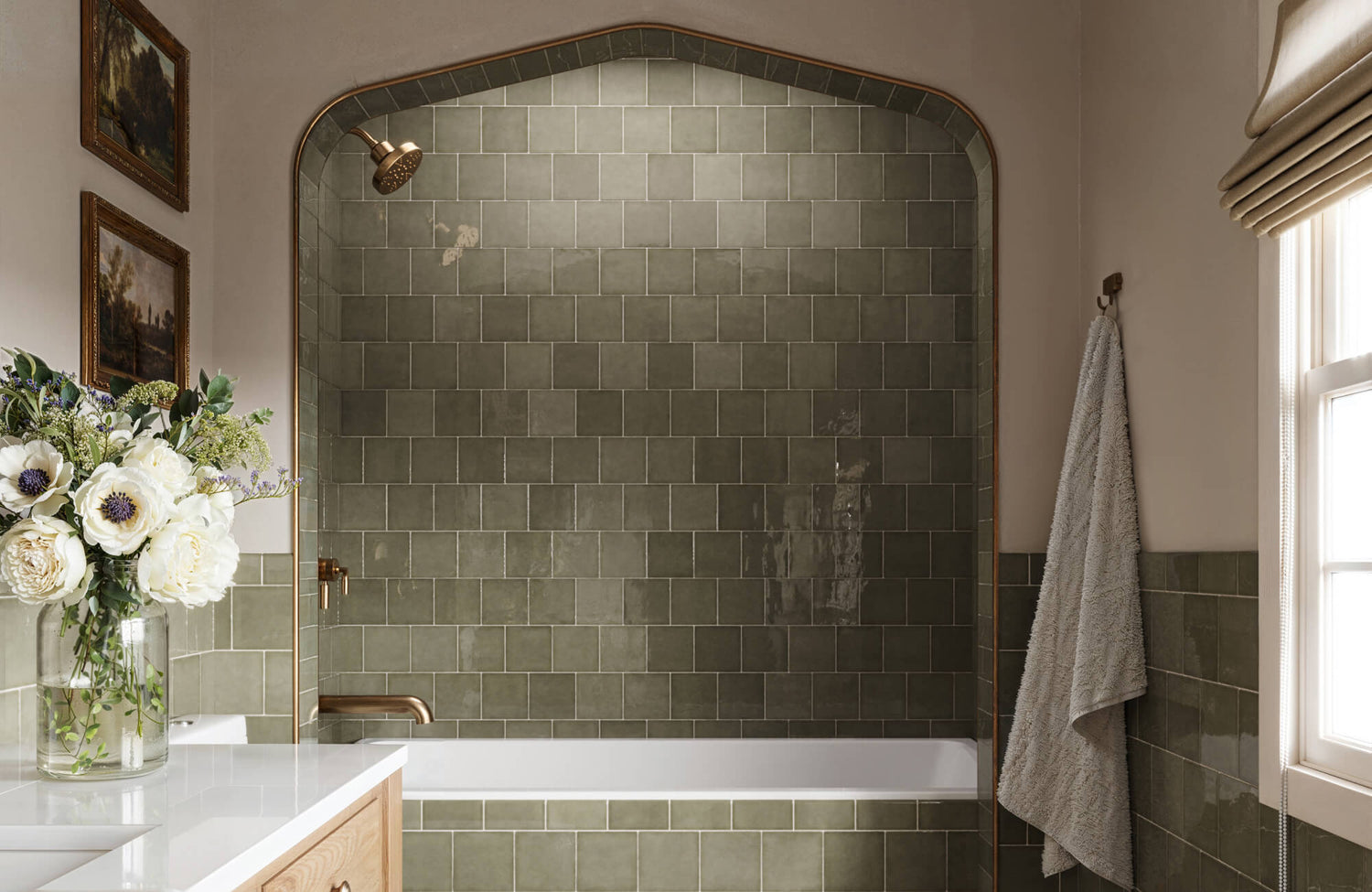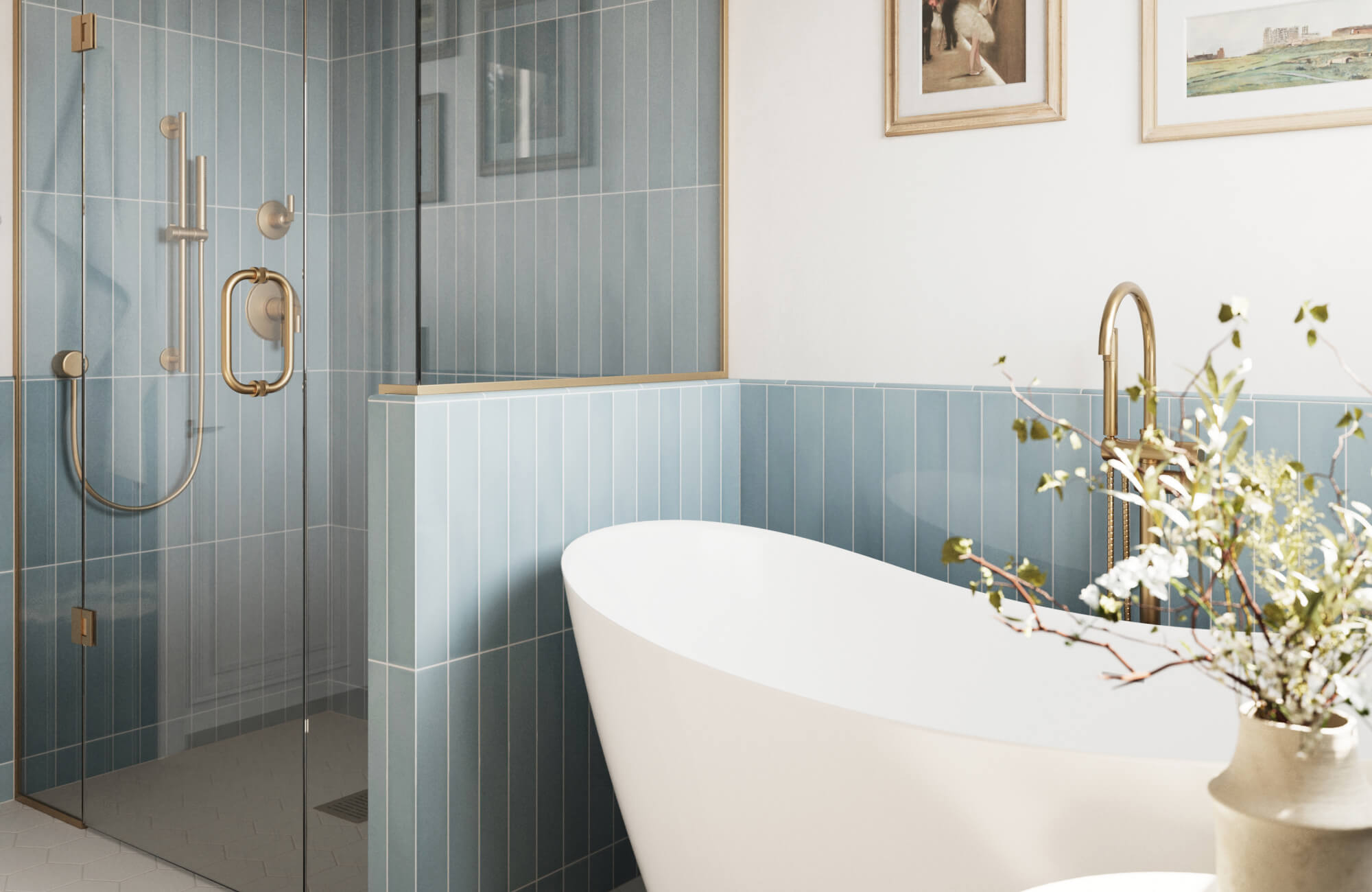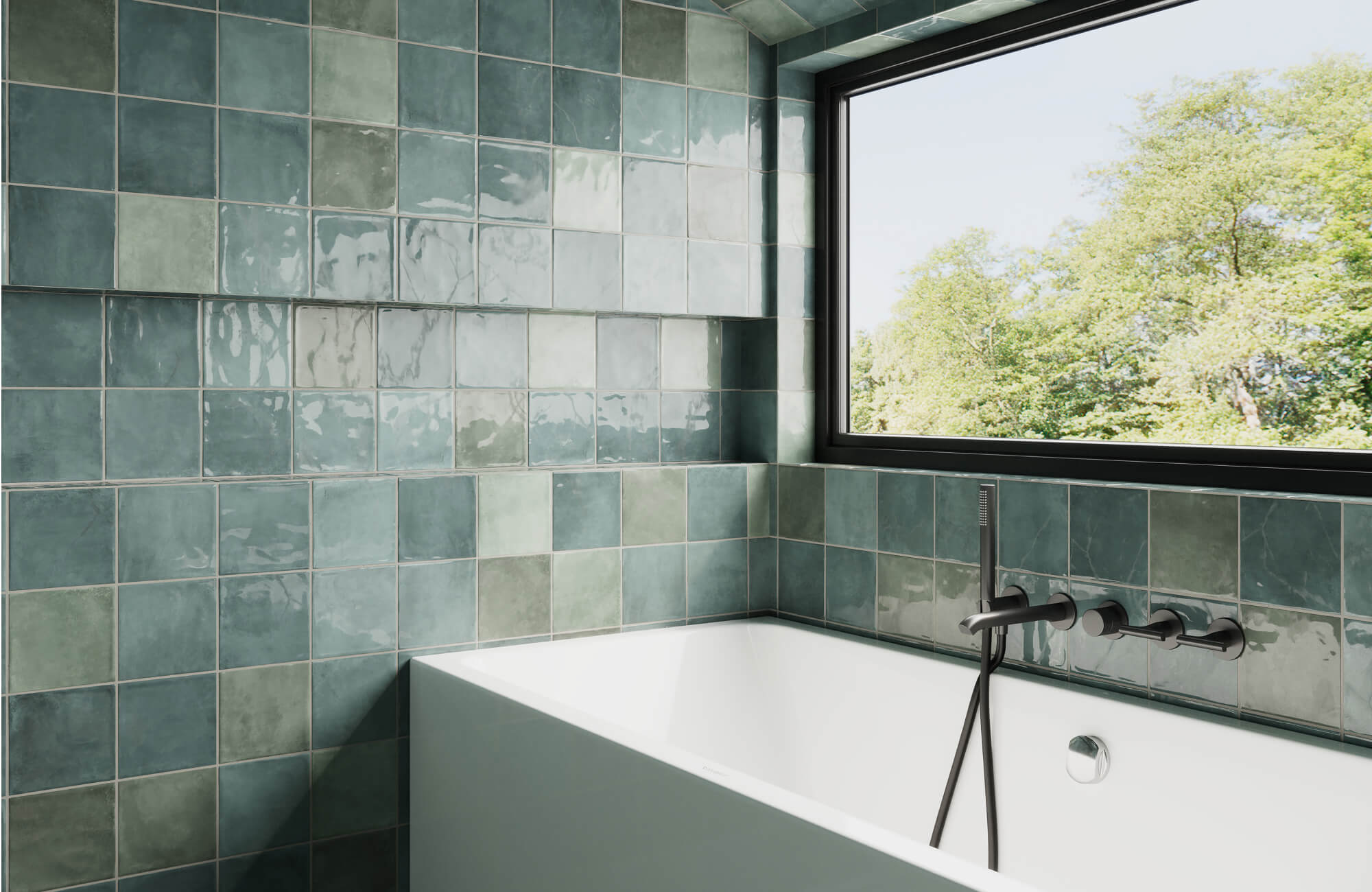Monochromatic bathroom designs have gained popularity, capturing the essence of simplicity and sophistication with a single color palette. This approach creates a seamless and tranquil space by perfectly blending minimalism and luxury to improve both the visual and functional aspects of a bathroom. It's not just about appearance—a monochromatic scheme can make a small space feel larger and more open, creating a breezy atmosphere that is both inviting and relaxing.
Creating this elegant uniformity necessitates careful coordination of every detail, from bathroom tile selection to fixture finish. This guide will walk you through the necessary steps for designing a monochromatic bathroom, including practical tips to ensure your space is both beautifully cohesive and highly functional.

Choosing and Layering Your Base Color
Selecting the best base color for your bathroom tile is crucial as it sets the mood and style of the space. Factors like the size of the bathroom, the amount of natural and artificial light it receives, and your personal style should guide your choice. A well-chosen base color not only complements the room's architectural features but also serves as a canvas for future aesthetic development.
How to Select Your Main Color
When selecting your main color, think about how different shades affect the perception of space. Lighter colors, like beige or soft gray, can make a small bathroom appear larger and brighter. In larger bathrooms, deeper tones can create a more intimate and luxurious atmosphere. As shown above, Edward Martin’s Dax 6x24 Matte Porcelain Tile in Rust, with its warm earthy tones, can be an excellent foundation for adding depth and warmth to a space, especially when combined with appropriate lighting.
Using Shades and Tones
Layering lighter and darker shades of your preferred color improves the dimension and visual interest of a monochromatic bathroom. Start with your main color as the foundation, then seamlessly introduce lighter or darker shades through tiles and complementary accessories. For example, if you want an earthy aesthetic in your monochromatic bathroom, you can start with a deep mocha as the foundational color and gradually introduce lighter shades such as caramel and cream. This approach not only improves visual appeal but also effectively separates different areas and highlights architectural details within the space, resulting in a harmonious yet dynamic environment.

Selecting Tile Materials, Textures, and Finishes
Choosing the right tile material and finish is essential for achieving a successful monochromatic bathroom design that combines style with durability. From the classic appeal of ceramic to the strength of porcelain and the distinct character of natural stone, each material offers distinct advantages and aesthetic qualities.
Tile Types and Materials
Ceramic and porcelain tiles are both excellent bathroom options, providing numerous benefits to meet a wide range of needs and preferences. For example, Edward Martin's Reagan 2x10 Matte Ceramic Tile in Teal, shown above, are ideal for wall applications due to their aesthetic appeal and ease of maintenance common to ceramic tiles. Porcelain tiles, on the other hand, are more known for their exceptional durability and water resistance, and are versatile enough for both floor and wall use, making them suitable for high-moisture environments and stylish interiors.
When choosing bathroom tiles, you must also consider both your design goals and the practical needs of your space. Both materials are available in a variety of finishes, including matte and polished, which are essential for blending into your monochromatic theme and enhancing the overall design.
Textures and Finishes
Texture and finish also play pivotal roles in adding depth to a monochromatic bathroom. The Reagan tile’s matte finish demonstrates how a non-reflective surface can deepen a color’s impact, providing a sophisticated backdrop that doesn’t overpower. Incorporating different textures, such as embossed or raised patterns, can introduce tactile elements as well, enriching the visual and physical feel of the space. Using polished finishes in conjunction with matte ones can increase light reflection, creating a brighter, more expansive feel that adds elegance and dimension to the overall monochromatic theme.
If you want to see how the right bathroom tile can transform your space, use our augmented reality (AR) tool to view different colors and finishes in real-time. It's a great way to test out different options and see how each tile choice affects your interior design before making a final decision.
Creating Visual Interest with Tile Patterns
In monochromatic bathroom designs, tile patterns are essential for breaking up visual monotony and adding sophistication to the space. Choosing the right pattern can transform a one-color palette into a visually appealing design element that enhances the entire room.
Popular Patterns for Monochromatic Looks
Patterns like herringbone, chevron, and grid add elegance and visual interest to monochrome designs. While the running bond pattern, as shown in the image above, has a straightforward and classic appearance, the herringbone pattern is especially effective in environments that require a sense of movement and flow. This pattern could produce a dynamic interplay of light and shadow, which is ideal for adding depth to a space. A chevron pattern, on the other hand, may be better suited to contemporary spaces with a sharp, modern aesthetic, whereas a simple grid pattern provides a more subtle, ordered look that complements minimalist environments.
Using Pattern as a Focal Point
Using tile patterns strategically as focal points, such as on feature walls or flooring, can help define the character of a room. While the running bond pattern, with its linear alignment, naturally lengthens spaces, other patterns, such as the chevron or basketweave, can add intricate detail and dynamic flair to the design. When executed in a monochromatic scheme, these patterns not only enhance the sense of space but also add to the overall elegance of the room. The careful placement of patterned tiles ensures that they stand out as key visual elements, anchoring the design while retaining visual appeal and coherence within the monochromatic theme.

Complementing with Fixtures and Accessories
Selecting the right fixtures and accessories is essential for enhancing your bathroom's monochromatic theme while also adding subtle details that enrich the overall aesthetic. By carefully coordinating these elements, you can create a harmonious and sophisticated space that feels both cohesive and meticulously designed.
Selecting Fixtures in the Same Color Family
To keep your monochromatic bathroom looking cohesive, pick fixtures like faucets, towel bars, and shower heads that complement the primary color scheme. For example, in a bathroom with Edward Martin’s Wren 12x24 Matte Porcelain Tile in Dune, as shown in the image above, choosing fixtures in complementary bronze or gold tones can highlight the tiles' warm undertones while creating a seamless visual flow. This approach not only reinforces the monochromatic theme but also adds a sense of luxury and coherence.
Coordinating with Accessories
When it comes to accessorizing, choosing items that subtly echo the main color and texture of your bathroom tiles can dramatically improve the space. Mirrors with minimalist frames, natural wood shelving, and decor items that match the colors of the tiles can all help to create a refined and stylish bathroom. These accessories should not only complement the color scheme but also serve practical purposes, combining utility and aesthetic appeal. The careful selection and placement of these elements ensure that they enhance rather than disrupt the monochromatic theme.
Lighting Tips for a Monochromatic Bathroom
Effective lighting is crucial in a monochromatic bathroom to ensure that the color palette and textures come to life. It defines the ambiance of the space and influences how color depth and tone are perceived, which is especially significant in schemes with limited color diversity.
For instance, natural light helps to reveal the true colors and textures of tiles and surfaces, as shown in the image above, where daylight softens and enriches the wall tiles' pale hues. Layered artificial lighting solutions, such as sconces next to mirrors, recessed lighting overhead, and task lighting next to the vanity, ensure that all areas are adequately lit.
This setup not only emphasizes the sleek lines and glossy finishes but also creates a warm, welcoming glow that adds to the room's overall elegance. Positioning these lights strategically can illuminate focal points and ensure that every angle looks good, improving both the functionality and style of the bathroom.
Embracing Monochrome in Bathroom Design
Monochromatic bathroom designs offer a unique blend of simplicity and sophistication, showcasing how a single color palette can create a space that feels both cohesive and elegant. By carefully selecting tiles, fixtures, and lighting that complement a central hue, you can achieve a design that feels both expansive and intimate. This approach not only highlights the aesthetic beauty of minimalism but also enhances the functional aspects of the bathroom.
Moreover, experimenting with monochromatic themes allows for a playful yet refined exploration of textures and patterns within a single color story. Take advantage of the opportunity to personalize your space by trying different shades, materials, and lighting to see what best reflects your style and meets your functional needs. Allow the simplicity of monochrome to inspire creativity, encouraging you to design a bathroom that is both stylish and unique to you. For any questions or personalized guidance, don’t hesitate to contact us! Our team is here to assist you through each step of your bathroom tile selection and installation, helping you achieve the ideal style and durability for your space.









